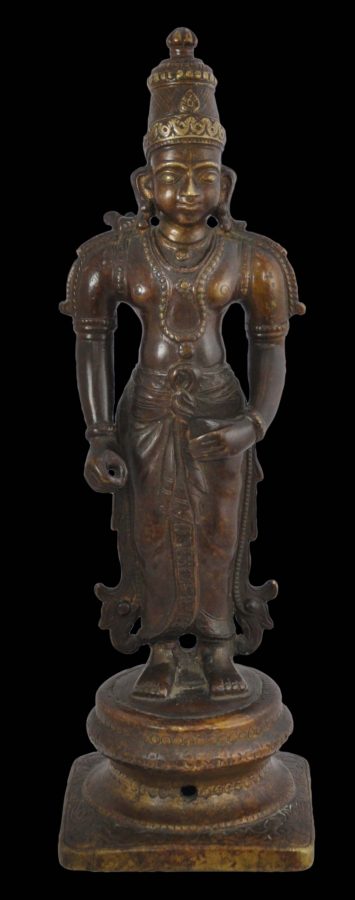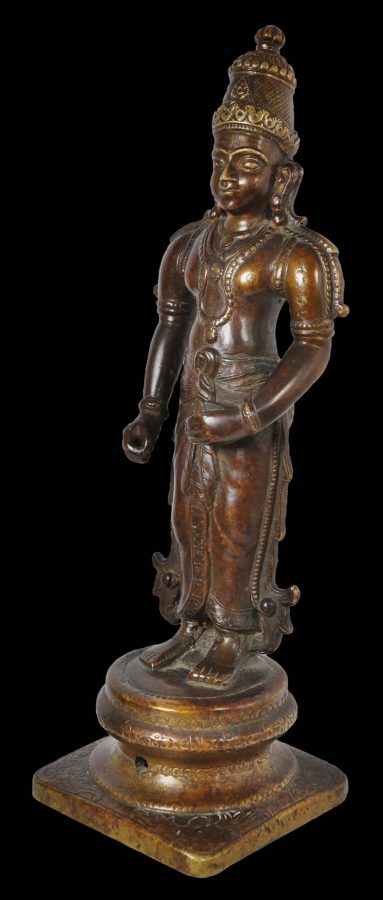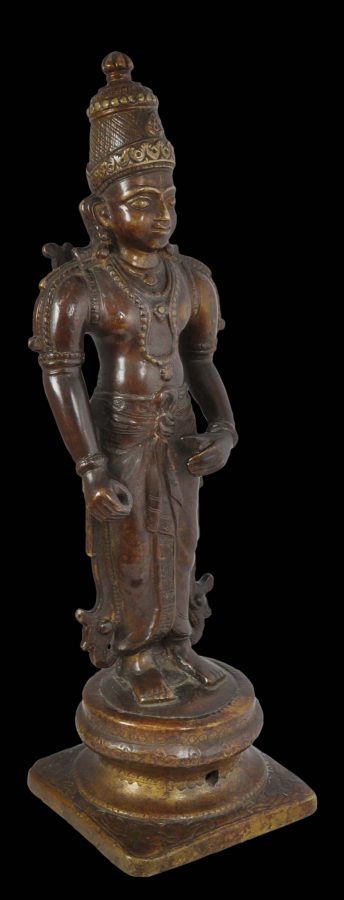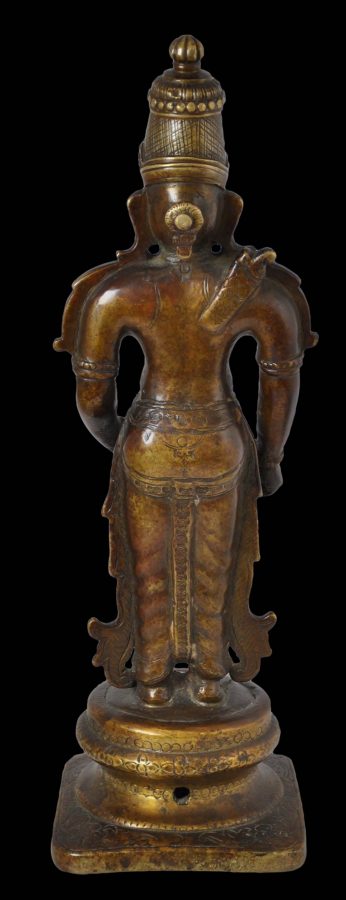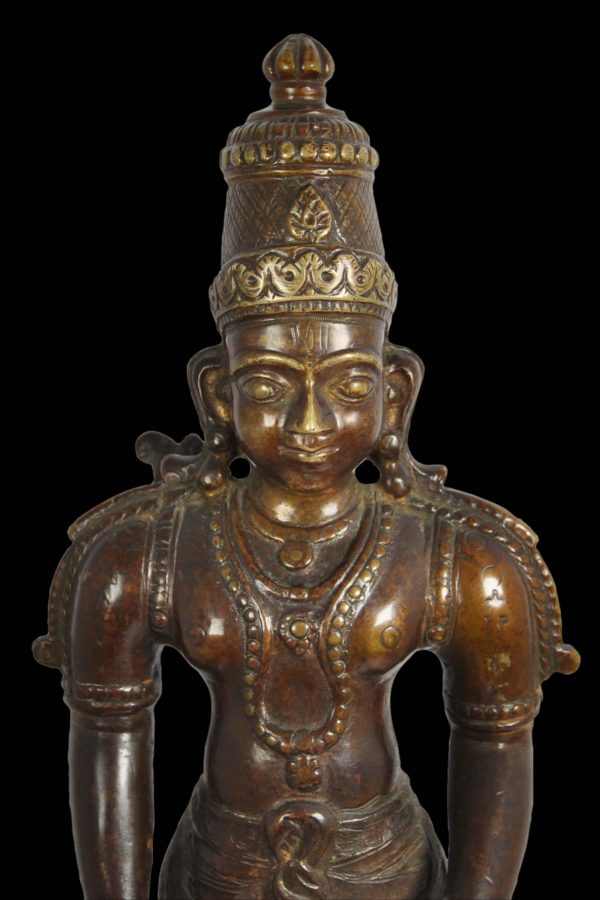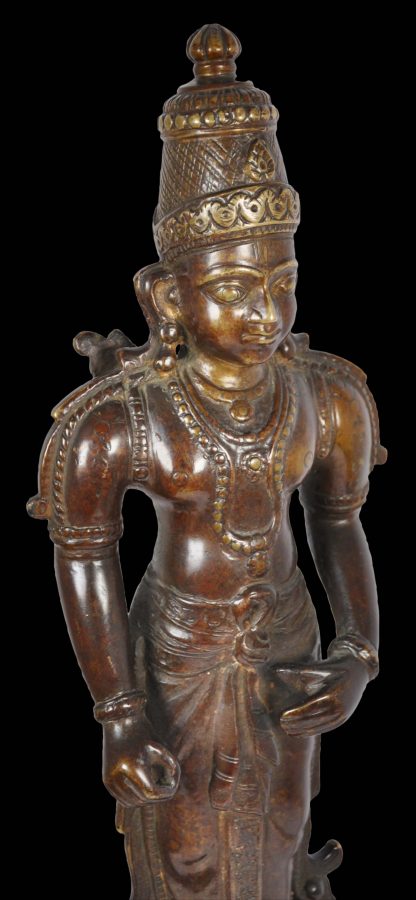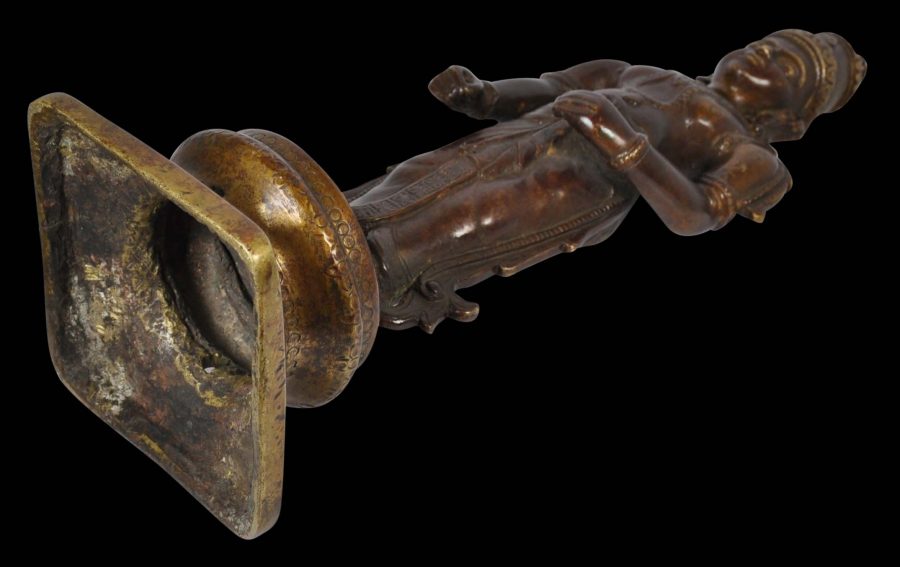This unusual and rare cast brass image is of Lakshmana, the younger brother of Rama in the Hindu epic Ramayana, who is regarded in some areas as an avatar of the god Vishnu.
The bronze here has been cast using the lost wax process. The stand appears to have been cast separately to the image. Lakshmana has been depicted with a tall headdress, the very broad shoulders of a warrior, and ample courtly jewellery. The base and the crown have been cast and engraved with lotus floral flourishes which suggest Sri Lankan origins (or at the very least, the bronze has come from the southern tip of Tamil Nadu in southern India, which has clear Sri Lankan influence.)
The porticoes of many Sri Lankan Buddhist temples are adorned with images of Hindu deities which serve as guardian protectors of the temple. The main guardian is Upulvan, the localised version of Vishnu. (The cult of Upulvan started during Sri Lanka’s medieval period and later the deity became identified with the Hindu god Vishnu. According to local tradition, the Lord Buddha entrusted Upulvan with the guardianship of Sri Lanka and its Buddhist creed.)
The use of Lakshmana here as a guardian protector is novel but appropriate given that the deity is seen as an avatar of Vishnu.
The image is in fine condition without damage or repairs. It has a wonderful varying chocolate-brown patina.
References
Seneviratna, A., Gateway to Kandy: Ancient Monuments in the Central Hills of Sri Lanka, Vijitha Yapa Publications, 1998.


